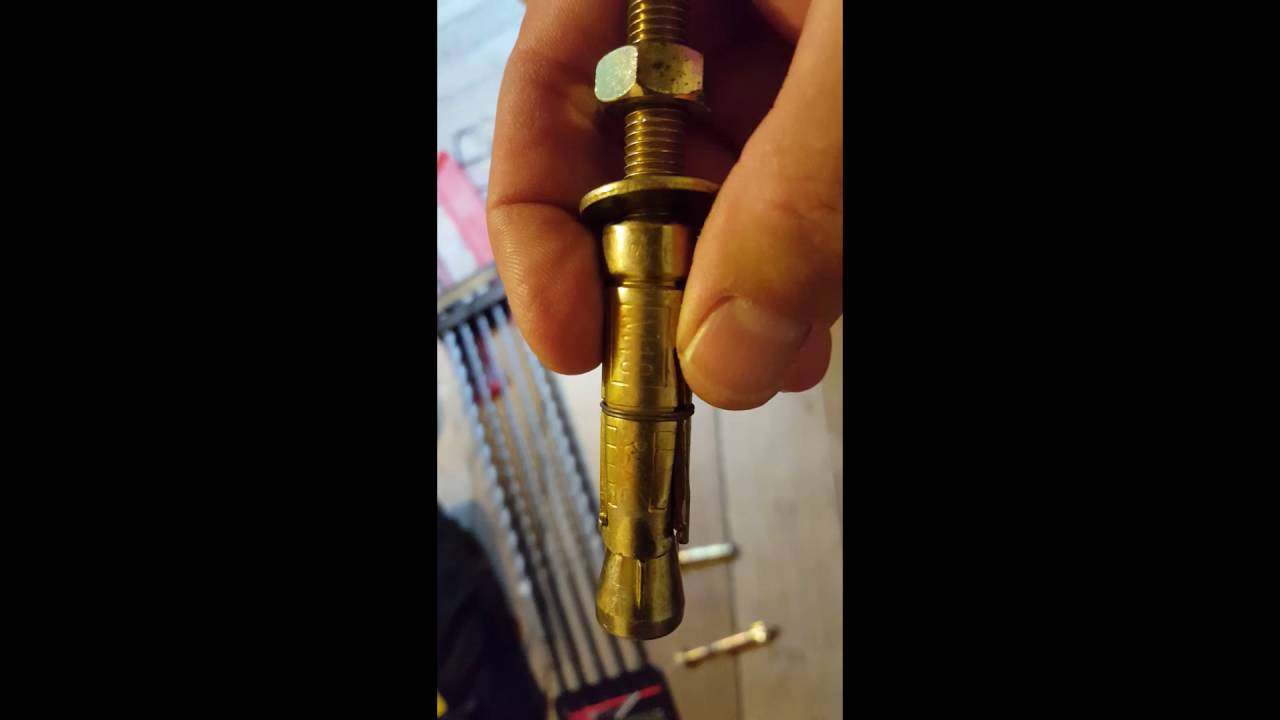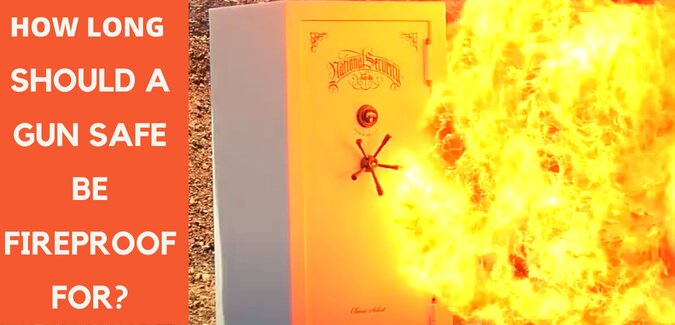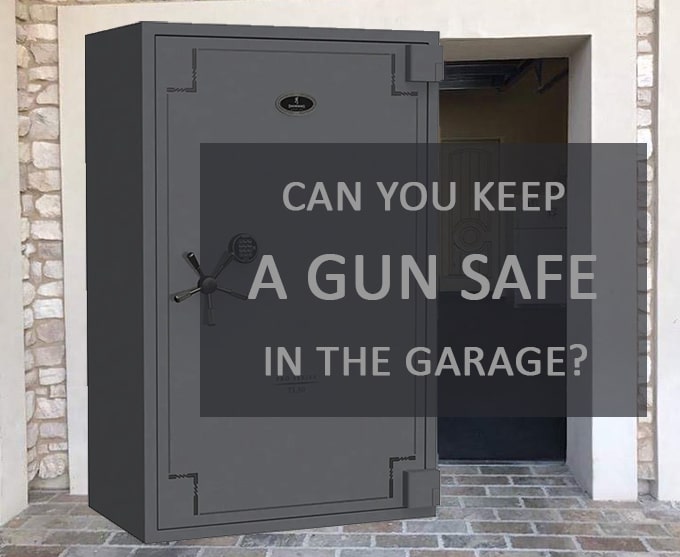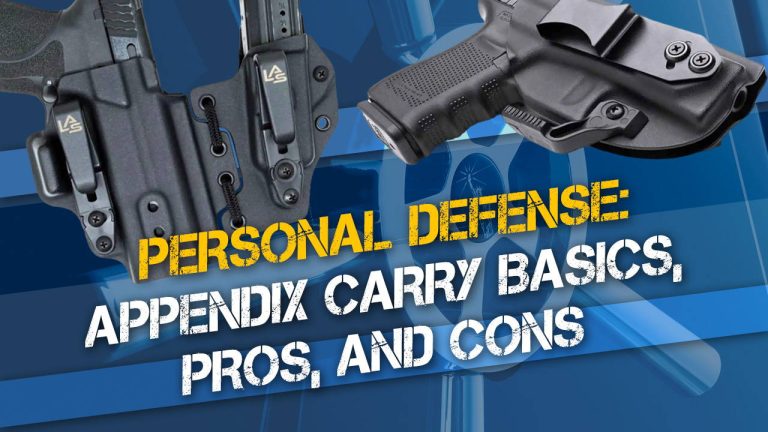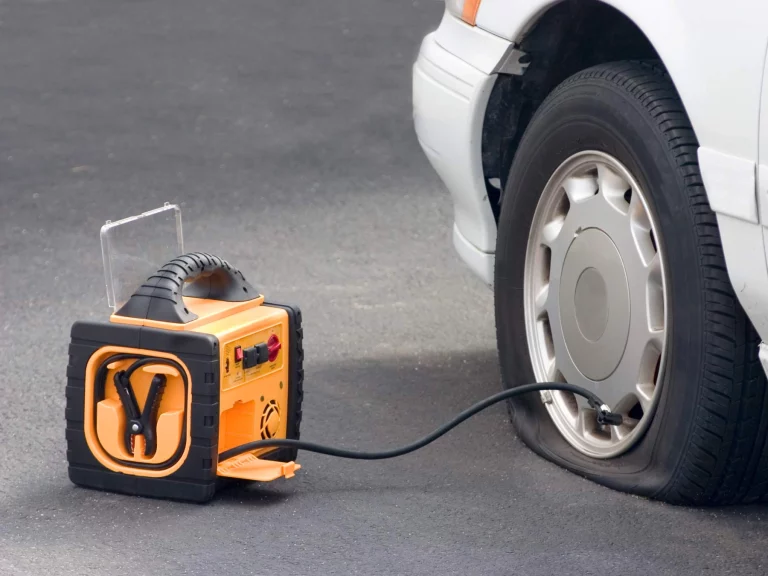How to Fix a Gun Safe: Simple Solutions
To fix a gun safe, first diagnose the issue, then follow the manufacturer’s instructions for repair. Common problems include lock malfunctions and door misalignment.
Gun safes are essential for securing firearms, ensuring safety, and preventing unauthorized access. Over time, they can encounter issues such as lock malfunctions, door misalignment, or electronic failures. Addressing these problems promptly is crucial to maintain the security and functionality of your safe.
Start by identifying the specific issue with your gun safe. Refer to the manufacturer’s manual for troubleshooting tips and repair instructions. Simple fixes might involve lubricating the lock mechanism, realigning the door, or replacing batteries in electronic locks. For more complex repairs, consider contacting a professional locksmith or the safe’s manufacturer for expert assistance.
Common Gun Safe Issues
Owning a gun safe is essential for keeping firearms secure. But, sometimes these safes encounter issues. Understanding these problems is key to fixing them. Here are two common gun safe issues:
Lock Problems
Lock problems are frequent with gun safes. They can prevent access or compromise security. Here are some common lock issues:
- Dead Batteries: Electronic locks may not work if batteries are dead. Replace batteries regularly.
- Jammed Locks: Dirt or debris can jam locks. Clean the lock mechanism carefully.
- Forgotten Combinations: Keep a record of the safe’s combination. If forgotten, contact the manufacturer for help.
Door Misalignment
Gun safe doors sometimes get misaligned. This can prevent them from closing or opening properly. Here are some reasons for door misalignment:
- Weak Hinges: Over time, hinges can weaken. Tighten or replace them as needed.
- Warped Door: Temperature changes can warp the door. Adjust the door or use a dehumidifier.
- Improper Installation: Ensure the safe is level. Use a spirit level to check.
By addressing these common issues, you can ensure your gun safe stays functional and secure.
Essential Tools For Gun Safe Repair
Maintaining a gun safe is crucial for security. To repair it, you need the right tools. These tools ensure the safe functions properly and remains secure. Let’s explore the essential tools for gun safe repair.
Basic Tools
Basic tools are necessary for any repair job. Here is a list of basic tools needed:
- Screwdrivers: Both flathead and Phillips screwdrivers are important.
- Wrench Set: Different sizes of wrenches for various bolts and nuts.
- Hammer: Useful for minor adjustments and fittings.
- Drill: A drill with various bits helps in making precise holes.
- Pliers: For gripping and bending wires or small parts.
Specialized Tools
Specialized tools are tailored for specific tasks in gun safe repair. Here are some of them:
| Tool | Purpose |
|---|---|
| Lock Bypass Tool | Helps in bypassing the lock mechanism without damage. |
| Digital Lock Tester | Checks the functionality of electronic locks. |
| Safe Cracking Kit | Contains tools for opening safes without keys or combinations. |
| Borescope | Allows you to inspect the interior without opening the safe. |
| Multimeter | Measures electrical circuits in digital locks. |
Safety Precautions
Fixing a gun safe requires careful attention to safety. Follow these precautions to ensure a secure repair process.
Handling Heavy Safes
Gun safes are often very heavy. Use proper lifting techniques. Bend your knees and keep your back straight. Consider using a dolly or hand truck for easier transportation.
- Always have a partner to help with lifting.
- Wear gloves to protect your hands.
- Clear the path of any obstacles before moving the safe.
Avoiding Damage
Prevent damage to your safe and surroundings. Place padding or blankets around the safe when moving it. This helps avoid scratches and dents.
- Use soft materials to cushion the safe.
- Move slowly and carefully to avoid bumps.
- Ensure the safe is level before making any adjustments.
Tools And Equipment
| Tool | Purpose |
|---|---|
| Wrench | Tightening bolts and screws |
| Screwdriver | Adjusting internal components |
| Level | Ensuring safe is balanced |
Always use the right tool for the job. This prevents injury and keeps your safe in good condition.
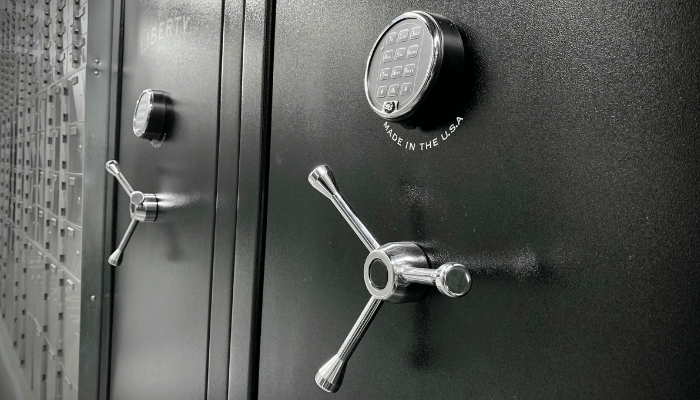
Credit: safehavenvaults.com
Fixing Lock Mechanisms
A gun safe is essential for keeping firearms secure. Sometimes, the lock mechanisms can fail. Knowing how to fix these issues is crucial. Let’s explore how to repair both mechanical and electronic locks.
Mechanical Locks
Mechanical locks are reliable and long-lasting. Yet, they can sometimes malfunction. Here are steps to fix them:
- Inspect the Lock: Look for visible damage or wear. Use a flashlight to check inside.
- Lubricate the Lock: Apply graphite powder to the keyhole. Avoid using oil-based lubricants.
- Check the Combination: Ensure the dial is set to the correct combination. Try resetting it.
- Tighten Loose Screws: Use a screwdriver to tighten any loose screws. This can fix alignment issues.
- Consult the Manual: Follow the manufacturer’s instructions for troubleshooting. This can provide specific solutions.
Electronic Locks
Electronic locks offer advanced security features. They are prone to different issues than mechanical locks. Here’s how to troubleshoot them:
- Replace Batteries: Low batteries can cause malfunctions. Use fresh, high-quality batteries.
- Reset the Lock: Follow the manual to reset the electronic lock. This can clear any errors.
- Check Wiring: Inspect the wiring for any damage. Replace any frayed or broken wires.
- Test the Keypad: Ensure all buttons work correctly. Clean the keypad with a soft cloth.
- Update Firmware: Some electronic locks have firmware updates. Check the manufacturer’s website for updates.
| Problem | Solution |
|---|---|
| Mechanical lock not turning | Lubricate with graphite powder |
| Electronic lock not responding | Replace the batteries |
| Combination not working | Reset the lock |
| Loose lock components | Tighten all screws |
| Keypad malfunction | Clean the keypad |
Adjusting Door Alignment
Adjusting the door alignment of your gun safe ensures optimal security. A misaligned door can compromise the safety of your firearms. Follow these steps to correct the door alignment and secure your valuables.
Hinge Adjustments
Check the hinges for any visible damage. Tighten loose screws using a screwdriver. If the hinges are damaged, consider replacing them.
Use a level to check the door alignment. Adjust the hinges by loosening the screws slightly. Move the door to the correct position and tighten the screws again. Repeat this until the door aligns perfectly.
Ensure the door swings open and closes smoothly. If it sticks or scrapes, make further adjustments. Proper hinge alignment is crucial for door security.
Seal Replacement
Inspect the door seal for any wear and tear. A damaged seal can affect the door alignment and security. Replace the seal if it appears worn out.
Remove the old seal carefully. Clean the surface where the new seal will be placed. Apply the new seal evenly along the door frame.
Ensure the seal is snug and without gaps. Test the door to ensure it closes tightly. A good seal improves both alignment and security.
Regularly check the seal and replace it as needed. A proper seal maintains the integrity of your gun safe.
| Step | Action |
|---|---|
| 1 | Check hinges for damage |
| 2 | Tighten loose screws |
| 3 | Use a level for alignment |
| 4 | Adjust hinges as needed |
| 5 | Inspect and replace seal |
Repairing Interior Components
Gun safes are essential for secure firearm storage. Over time, interior components may need repairs. Fixing these parts keeps your gun safe functional and organized. Below are some common repairs you can undertake.
Shelf Adjustments
Shelves in gun safes can become loose or misaligned. To fix this, remove all items from the shelf. Inspect the brackets and screws holding the shelf. Tighten any loose screws using a screwdriver. If the brackets are bent, replace them with new ones.
Some gun safes have adjustable shelves. To adjust, remove the shelf and reposition the brackets to your desired height. Replace the shelf on the new bracket position. Ensure the shelf is level before placing items back.
If your shelf is damaged, consider replacing it with a new one. Measure the dimensions of the current shelf. Purchase a new shelf that fits these dimensions. Install the new shelf using the existing brackets.
Interior Lighting
Interior lighting enhances visibility inside your gun safe. Over time, lights may burn out or become dim. Check the light bulb first. If it is burnt out, replace it with a new one. Ensure the new bulb is compatible with your gun safe.
If the light fixture is damaged, consider replacing it. Disconnect the power source before removing the old fixture. Install the new fixture following the manufacturer’s instructions. Reconnect the power source and test the new light.
Some gun safes use LED lighting strips. If the strip is not working, check the connections and power source. Replace any faulty parts as needed. LED strips are energy-efficient and provide bright, long-lasting light.
| Issue | Solution |
|---|---|
| Loose Shelf | Tighten screws, replace brackets |
| Burnt-out Bulb | Replace with compatible bulb |
| Damaged Light Fixture | Install new fixture |
Always keep your gun safe in top condition. Regular maintenance ensures a secure and organized space for your firearms.
Maintaining Your Gun Safe
Maintaining your gun safe is crucial for ensuring its longevity and functionality. Regular upkeep prevents mechanical failures and keeps your firearms secure. This section will guide you through the key aspects of maintaining your gun safe.
Regular Inspections
Performing regular inspections of your gun safe helps identify issues early. Check for any signs of rust or wear on the safe’s exterior and interior. Ensure the locking mechanism works smoothly by testing it periodically. If you notice any stiffness, address it immediately to prevent future problems.
- Examine the hinges and bolts.
- Inspect the door seals for cracks.
- Verify the electronic keypad or dial combination.
Lubrication Tips
Proper lubrication is vital for the smooth operation of your gun safe. Apply a small amount of lubricant to the locking bolts and hinges. Use a high-quality lubricant specifically designed for safes.
- Open the safe door.
- Apply the lubricant to the hinges.
- Move the door back and forth to distribute the lubricant.
- Lubricate the locking bolts.
Avoid over-lubricating, as excess lubricant can attract dust and debris. Always wipe away any excess to keep your safe clean.
| Maintenance Task | Frequency |
|---|---|
| Inspect Hinges and Bolts | Monthly |
| Lubricate Locks and Hinges | Every 6 Months |
| Check Door Seals | Annually |
Keep these maintenance tasks in mind to ensure your gun safe remains in optimal condition. Regular care keeps your firearms secure and your safe functioning properly.

Credit: www.youtube.com
When To Seek Professional Help
Fixing a gun safe can sometimes be straightforward. But certain issues require professional help. Knowing when to seek professional assistance is crucial. This ensures your gun safe remains secure and functional.
Identifying Complex Issues
Some gun safe problems are too complex for DIY fixes. Complex issues include electronic lock failures, door misalignment, and internal mechanical failures. These problems can compromise the safety and security of your gun safe.
If the safe door won’t close or open properly, you might need professional help. Similarly, if the electronic lock stops working, it’s best to consult an expert. Attempting to fix these issues without proper knowledge might worsen the situation.
Finding Qualified Technicians
Finding a qualified technician is essential. Always choose a certified professional for your gun safe repairs. Look for technicians with experience in handling gun safes.
You can start by checking online reviews and ratings. Ask for recommendations from friends or family. Ensure the technician has the necessary certifications and expertise.
Below is a table to help you identify the qualifications of a reliable technician:
| Qualification | Importance |
|---|---|
| Certification | Ensures the technician is trained and qualified. |
| Experience | Experienced technicians handle complex issues effectively. |
| Reviews | Positive reviews indicate reliable service. |
By identifying complex issues and finding the right technician, you can ensure your gun safe remains in top condition.

Credit: www.amazon.com
Frequently Asked Questions
How Do I Reset My Gun Safe Combination?
To reset your gun safe combination, refer to the manufacturer’s manual. Usually, it involves entering the current combination, pressing a reset button, and setting a new combination.
Why Won’t My Gun Safe Open?
If your gun safe won’t open, check the batteries in the keypad. Ensure you are entering the correct combination. If issues persist, consult the manual or contact customer support.
What Should I Do If My Gun Safe Is Jammed?
If your gun safe is jammed, try gently shaking or tapping it. Check for any obstructions in the locking mechanism. If the issue continues, contact a professional locksmith.
How Can I Maintain My Gun Safe Lock?
To maintain your gun safe lock, regularly lubricate the locking mechanism with a silicone-based lubricant. Ensure the batteries are fresh and replace them annually.
Conclusion
Fixing a gun safe can be straightforward with the right approach. Follow the steps mentioned to ensure security. Regular maintenance is essential for optimal performance. Always prioritize safety and consult professionals if needed. A well-maintained gun safe provides peace of mind and protects your firearms effectively.
Keep your gun safe in top shape.

